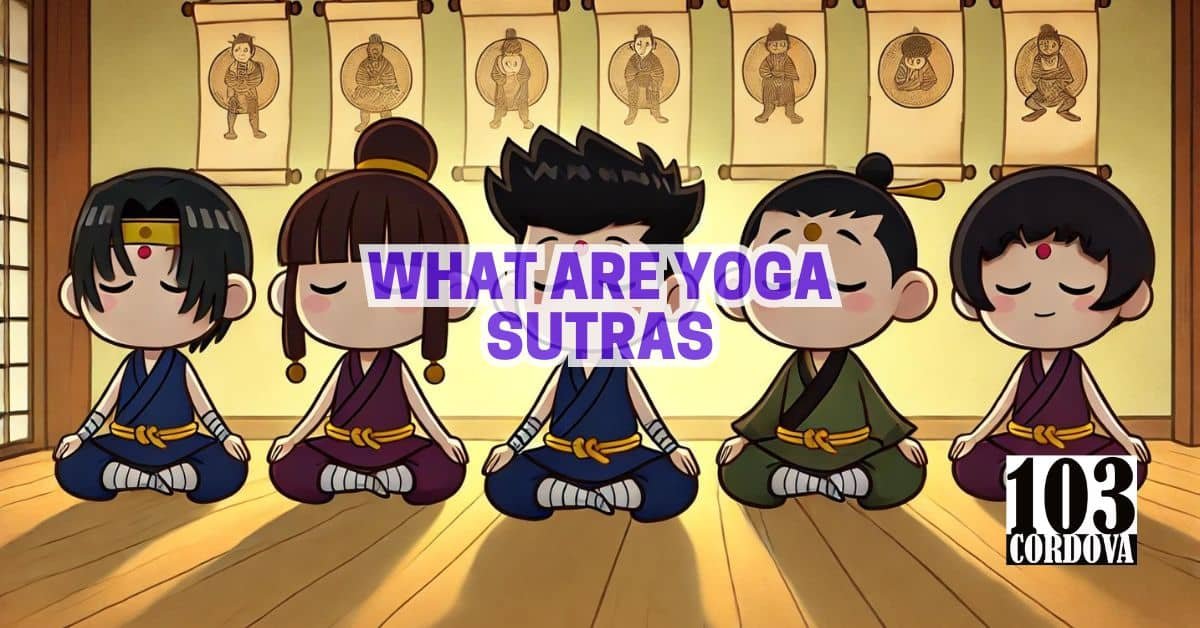The Yoga Sutras are a set of ancient teachings that form the basis of classical yoga philosophy.
They were composed by the sage Patanjali around 400 CE, offering guidance on more than just physical yoga poses.
These 196 aphorisms focus on the mind, the nature of suffering, and the path to spiritual liberation.
The Yoga Sutras serve as a map for understanding the self and finding inner peace.
Their teachings are still studied and applied by yogis around the world today.
1. What Are the Yoga Sutras? Understanding the Basics
The Yoga Sutras are a concise collection of verses that aim to teach the principles and practices of yoga.
They are written in Sanskrit and cover a broad spectrum of topics, from moral guidelines to techniques for mastering the mind.
Patanjali wrote these sutras to help individuals overcome human suffering and realize their higher potential.
The teachings emphasize control over thoughts and actions, leading to mental clarity and inner peace.
They form the philosophical backbone of what yoga represents beyond just physical exercise.
🧘 What Are Yoga Blocks For? Enhancing Your Practice with the Right Props
2. The Historical Context of the Yoga Sutras
The Yoga Sutras emerged during a time of rich spiritual development in India, likely between 200 and 400 CE.
Patanjali combined the wisdom of various existing traditions, including Hinduism, Jainism, and Buddhism, to create a cohesive philosophy of yoga.
This period saw a growing interest in understanding the mind, consciousness, and ways to transcend suffering.
The teachings were revolutionary in organizing yoga into a structured system, making the path to self-realization accessible.
Patanjali’s work has since become a cornerstone of Indian spiritual and philosophical thought.
🧘 Discovering the Benefits of Yoga: What Science Says
3. Exploring the Structure of the Yoga Sutras
The Yoga Sutras are divided into four chapters, each with a distinct focus.
The first chapter, Samadhi Pada, discusses the goal of yoga—reaching a state of meditative absorption.
The second, Sadhana Pada, outlines the practices necessary to achieve this goal, including the famous eight limbs of yoga.
The third chapter, Vibhuti Pada, explains the powers or results that come from dedicated practice, while the fourth, Kaivalya Pada, focuses on liberation from suffering.
This structure allows the practitioner to progress step by step, from understanding the mind to achieving spiritual freedom.
🧘 Yoga Body vs. Gym Body: Which One Is Right for You?
4. Core Themes and Concepts in the Yoga Sutras
The Yoga Sutras emphasize key themes like the control of the mind, the removal of suffering, and the pursuit of spiritual liberation.
One of the central ideas is chitta vritti nirodha, which means stilling the fluctuations of the mind to achieve inner peace.
Another core concept is the kleshas, or afflictions, such as ignorance, ego, and attachment, which block spiritual progress.
Patanjali also introduces the idea of non-attachment, suggesting that freedom comes when we detach from worldly desires.
Together, these concepts guide the practitioner toward mental clarity and self-awareness.
🧘 Who Invented Yoga Pants? A Look at Their Evolution Through the Years
5. An Overview of the Eight Limbs of Yoga
The eight limbs of yoga are practical guidelines to help individuals achieve self-discipline and spiritual growth.
They begin with ethical practices: yamas (restraints) and niyamas (observances), which govern personal behavior.
The third and fourth limbs are asanas (postures) and pranayama (breath control), which focus on the body and breath.
The final four limbs—pratyahara (withdrawal of the senses), dharana (concentration), dhyana (meditation), and samadhi (absorption)—lead the practitioner inward, fostering a deeper state of awareness.
These limbs form a comprehensive path toward achieving inner balance and ultimately spiritual liberation.
🧘 How to Set Up Your Space for a Successful Yoga Class at Home
6. The Importance of Meditation in the Yoga Sutras
Meditation is emphasized as one of the most important practices in the Yoga Sutras, offering a path to mastering the mind.
Patanjali describes meditation as a process of focusing the mind to quiet mental noise and distractions.
Through regular meditation, a practitioner can reach deeper states of consciousness, leading to self-realization and lasting peace.
The final state of samadhi, or enlightenment, is the ultimate goal of this meditative practice.
Patanjali teaches that by mastering meditation, one can move beyond the surface-level disturbances of life to experience true inner calm.
🧘 Who Is The Father Of Yoga? The Impact of His Work on Mindfulness and Meditation
7. Practical Applications of the Yoga Sutras in Daily Life
The teachings of the Yoga Sutras are not just for advanced practitioners; they offer practical advice for everyday living.
Principles like non-violence (ahimsa) and truthfulness (satya) from the yamas can be applied to relationships and interactions with others.
Meditation and mindfulness techniques help manage stress and improve focus in modern, fast-paced lives.
By following the Sutras, individuals can cultivate patience, emotional resilience, and a greater sense of purpose.
These teachings allow for personal growth while navigating the challenges of daily life.
🧘 Common Mistakes to Avoid in a Yoga Class for Beginners
8. How the Yoga Sutras Influence Modern Yoga Practices
Although modern yoga is often seen as a physical practice, the Yoga Sutras provide the deeper philosophical foundation behind it.
Many contemporary yoga teachers incorporate ideas from the Sutras, such as mindfulness, non-attachment, and self-discipline, into their teachings.
Even practices like asana and pranayama, common in yoga studios, are based on the eight-limbed path outlined by Patanjali.
The Yoga Sutras remind practitioners that yoga is more than physical postures; it’s a holistic practice for mental and spiritual growth.
This ancient wisdom continues to shape how yoga is taught and understood today.
🧘 How to Safely Perform Yoga Ball Pregnancy Exercises in Every Trimester
9. Debunking Common Misconceptions About the Yoga Sutras
A common misconception is that the Yoga Sutras are primarily about physical exercises like asanas, but they actually focus more on mental and spiritual aspects.
Another misunderstanding is that the Sutras are exclusive to certain religious or spiritual traditions, when in fact they offer universal principles for personal growth.
Some also believe that the teachings are difficult to apply in modern times, but their simplicity and practicality make them relevant to anyone seeking balance in life.
Many people also think that understanding the Sutras requires a deep knowledge of Sanskrit, but numerous accessible translations exist.
Clearing up these misconceptions allows more people to appreciate the broad wisdom the Sutras offer.
🧘 Essential Tips on What to Wear to Yoga Class for Beginners
10. Personal Reflection and Practice: Engaging with the Yoga Sutras
Engaging with the Yoga Sutras involves both reflection and practice, allowing individuals to integrate their teachings into everyday life.
Many start by reflecting on the ethical guidelines, such as yamas and niyamas, to cultivate better self-awareness.
Incorporating meditation from the sutras helps develop mental clarity and emotional balance.
Through regular practice, individuals can experience gradual inner transformation and a deeper sense of purpose.
The Sutras invite practitioners to personalize their journey, progressing at their own pace while applying the teachings in practical ways.
🧘 What Is Chair Yoga? Unlocking the Benefits of This Accessible Practice
💡 Conclusion
The Yoga Sutras offer profound insights into the human mind, body, and spirit, guiding practitioners toward a more meaningful life.
Despite being written thousands of years ago, their teachings remain relevant to modern challenges like stress, anxiety, and lack of focus.
Whether you are new to yoga or have years of experience, the Sutras can help you understand yourself and the world.
They provide a framework for living with intention, clarity, and compassion.
By embracing this ancient wisdom, you can cultivate a more balanced and peaceful life.
🧘 Our Services
Join our yoga classes for all ages at 103 Cordova Tower, Marquinton Residences, Cirma Street, Sto. Nino, Marikina City.
Whether you’re a beginner or experienced, our sessions are designed to help you improve flexibility, strength, and mindfulness in a supportive environment.
We offer personalized guidance to ensure you get the most out of your practice.
Contact us via Facebook or through the contact form on our website, or call 09176225780 for more details.
Start your journey to wellness with us today!

